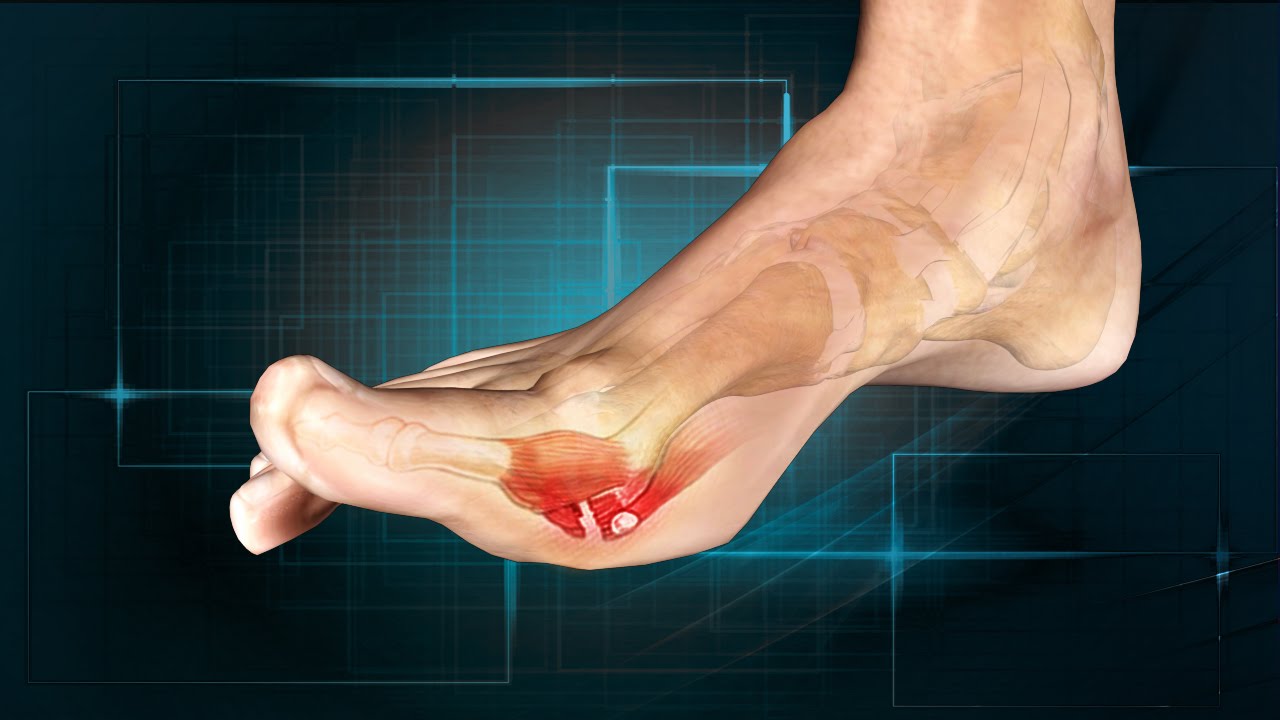Turf Toe Causes, Symptoms, Diagnosis and Treatment

What is Turf Toe?
Turf toe is an injury to the underside of the big toe and joint at the base of the big toe. This joint, the first metatarsophalangeal (MTP) joint, is commonly known as the “ball of the foot.” Turf toe is specifically a joint sprain of the big toe. The sprain may involve damage to ligaments, tendons, or bone separately or in combination.
Causes of Turf Toe
Turf toe is caused when the metatarsophalangeal (MTP) joint, the big toe joint, is hyperextended. In other words, this injury occurs when the heel is lifted off the ground and power is applied to the big toe. Turf toe can occur suddenly or gradually, from repeated push-off movements to the ball of the foot.
Symptoms of Turf Toe
Grade 1
- Symptoms are mild
- Minor swelling and confined tenderness
- Typically no black and blue discoloration
- Most common turf toe injury
Grade 2
- Symptoms are moderate
- Tenderness and swelling are dispersed
- Limited big toe motion
- Slight black and blue discoloration
- Mild limp when weight is applied
- Symptoms intensify within 24 hours
Grade 3
- Symptoms are severe
- Significant swelling
- Pain upon touch
- Limited big toe motion
- Unable to put weight on hurt foot
- Dispersed black and blue discoloration
- A person who suspects a turf toe injury is advised to see a doctor depending on the extent of the injury and how long symptoms persist.
Diagnosis of Turf Toe
Imaging Testing: Imaging tests may also be used for turf toe diagnosis, in particular to gauge the extent of the injury and/or rule out other possible injuries.
X-rays may be requested to rule out bone-related issues, such as a fracture. It is recommended to have front and back (anteroposterior) and side (lateral) radiographs taken, along with central (axial) images of sesamoids, or small bones in the foot. A physician may take comparison X-rays of the opposite foot to ensure the sesamoids are correctly located, in a tendon under the MTP joint.
Magnetic resonance imaging (MRI) provides images of non-bone structures, such as the tissue, ligaments and tendon encompassing the MTP joint. This imaging is particularly beneficial for people with moderate to severe turf toe, grade 2 or grade 3 injuries, or in those with deformities found in X-rays.
Treatment of Turf Toe
Nonsurgical Treatment
Most cases of turf toe are treated without surgery. Nonsurgical treatment is determined by the grade of the injury.
Grade 1. The RICE protocol is recommended for this type of injury: Rest, ice, compression, and elevation. Taping the big toe to the smaller toes will restrict motion. Non-steroidal anti-inflammatory medications may relieve pain and swelling.
Pain is usually tolerable and an athlete can continue sports participation using a stiff-soled shoe. Orthotics, such as a thin, graphite shoe insert with a rigid forefoot component, can reduce stress on the plantar plate and provide stability.
Grade 2. To keep the MTP joint immobilized, a walking boot may be prescribed for up to a week if needed. Afterwards, these injuries are managed with a taping regimen and the Grade 1 treatments discussed above.
Stretching and strengthening exercises can reduce joint stiffness.
In most cases, an athlete with a Grade 2 injury needs 3 to 14 days of rest before returning to play.
Grade 3. These more severe injuries are most often treated with immobilization for several weeks. The athlete may wear a walking boot or be put in a cast that keeps the big toe in a partially pointed down position. As the injury heals, treatment will gradually step down to Grade 2 and then to Grade 1.
Physical therapy may be helpful and should be started as soon as symptoms allow. Specific exercises will help to stretch and strengthen the big toe. Early joint movement is essential for reducing or preventing joint stiffness.
Surgery
By : Natural Health News




